Joost At The Roost
-
Ships in 2 to 3 weeks
Details
Description
SKU: JL.JLP-8060
By Miles Davis. Edited by Jeffrey Sultanof. Arranged by Gerry Mulligan. Swing. Full score and set of parts. Published by Jazz Lines Publications (JL.JLP-8060).Gil Evans set up shop in his small New York apartment above a Chinese laundry acting as an advisor to a group of jazz musicians. Evans was already well-known as an adventurous arranger who took inspiration from classical composers of the day. Miles Davis was trying to separate himself from the bebop club scene, of which he was a part in Charlie Parker's groups. In 1947 Davis and Evans organized a group of musicians into a working nonet and began to rehearse some new material. The musicians that were in the group included: Miles Davis (trumpet), Mike Zwerin (trombone), Bill Barber (tuba), Junior Collins (French horn), Gerry Mulligan (baritone saxophone), Lee Konitz (alto saxophone), John Lewis (piano), Al McKibbon (bass), and Max Roach (drums). The emphasis of this group was the arrangements and the re-definition of the current jazz scene. They invented what came to be known as the 'cool school.' In 1949 Davis enlisted Gerry Mulligan, John Lewis, Gil Evans and Johnny Carisi to write 12 arrangements that were recorded by Capitol Records. Three recording sessions over the next year yielded the famous 'Birth of the Cool' record. Here is Gerry Mulligan's arrangement of Joost at the Roost engraved from the manuscript - this is not a transcription. This chart was never recorded. This piece has been arranged for alto saxophone, baritone saxophone, trumpet, horn in F, trombone, tuba, bass, drums. Recognizing that not every band has access to a horn in F or a tuba, we've included a second trumpet part as an alternate for the horn part. And, a bass trombone would easily be able to play the tuba part in the event that you don't have that instrument at your disposal. But, also included is a tenor saxophone part as an alternate for the tuba. Featured are solos for trumpet, alto saxophone, baritone saxophone, piano, and trombone.
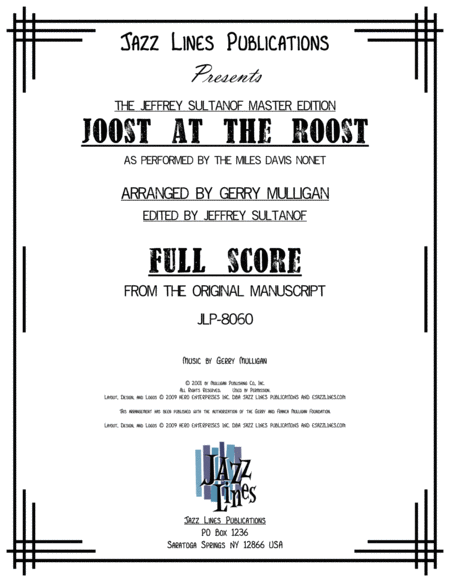
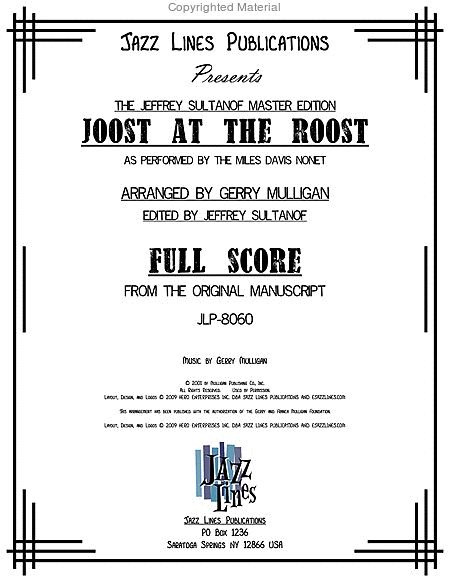
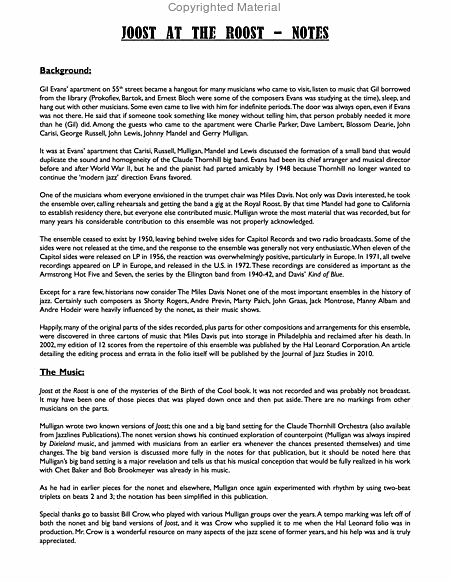
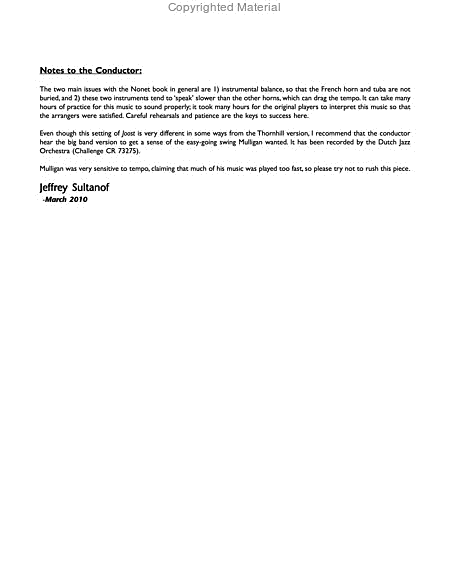
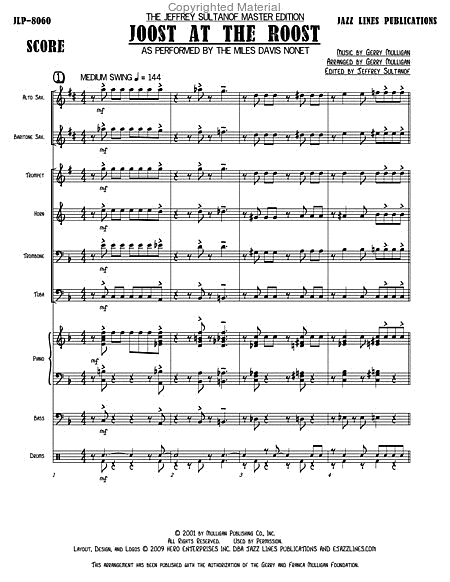
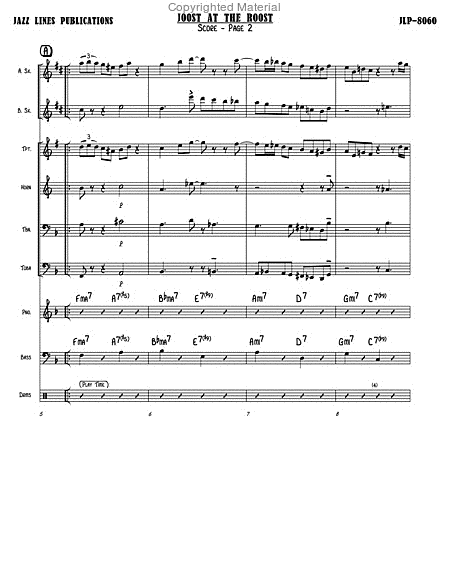
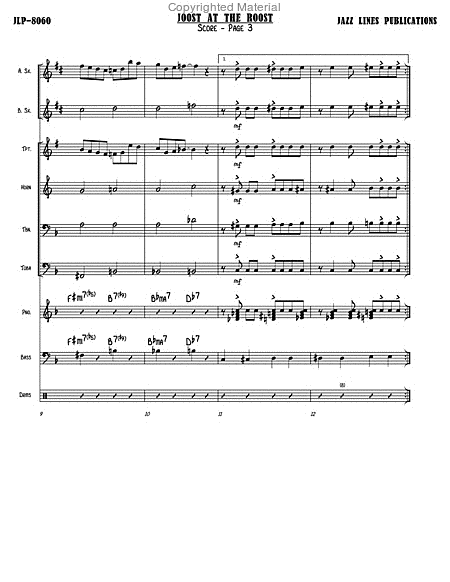
 Share
Share